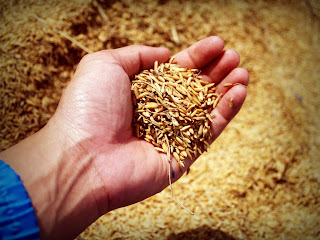IS YOUR RICE POISONED?
As I journey down the road to recovery I have ran into many articles throughout my research. One such article claimed that rice has the highest levels of arsenic of any other common food, substantially higher. The levels of arsenic in rice were so much higher than other foods that the government did a study focusing only on rice.
Now before you start panicking and throwing away all your rice, please read the rest of this post. The government study has concluded that it is safe to eat rice. The government estimates there would be 495 cases of cancer out of 1,000,000 people who consumed three servings of rice per day from birth to 50 years old. However, there are many health professionals who disagree with this estimate and recommend anywhere from 1 serving per day to 1 serving per week.
Since the government study was originally released, there has been much research on preparing rice in a way that would reduce the amount of arsenic. Researchers have found that if you rinse, soak for 12-48 hours, then cook the rice in 5-6 parts water to 1 part rice (drain excess water once fully cooked) you can reduce the amount of arsenic in the rice up to 85%. So feel safe to eat rice, especially if prepared in the recommended method for now.
Research is also suggesting the level of arsenic in our environment is increasing, so they recommend limiting your consumption of rice and choosing other grains (buckwheat, quinoa, millet, and other grains that are substantially lower in arsenic) for a more balanced approach. I have not been able to find any research studying if sprouted rice further reduces the amount of arsenic. But, I have found an article from livestrong.com stating that sprouted rice has 4 times the fiber and vitamin E than regular rice, 3 times the vitamin B-1, B-6, and Magnesium, and more than twice as much protein.
Sprouted rice is prepared similarly to the method mentioned above. The difference is to rinse, drain, and refill the rice with water every 2-4 hours while soaking. Once the rice has been soaked drain a final time and let stand at room temperature for 8-24 hours (or until you see tiny, and I mean tiny, white shoots beginning to grow from the bottom of most of the rice grains.) The following video explains the process, the only difference in the video that I would recommend changing is cooking the rice in 5-6 times the amount of water. The lady in the video recommends approximately a 1-to-1 ratio.
If you like what you have read so far, click the subscribe button at the top of the page.
Links to related articles:
https://www.healthline.com/nutrition/arsenic-in-rice#section7
https://www.fda.gov/files/food/published/Arsenic-in-Rice-and-Rice-Products-Risk-Assessment-Report-PDF.pdf
https://www.bbc.co.uk/programmes/articles/2F1MDzyW55pg97Tdpp7gqLN/should-i-be-concerned-about-arsenic-in-my-rice
https://www.livestrong.com/article/354998-the-nutrition-of-sprouted-brown-rice/




Comments
Post a Comment